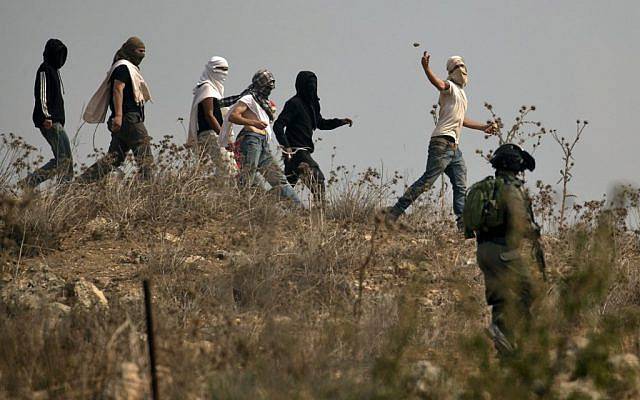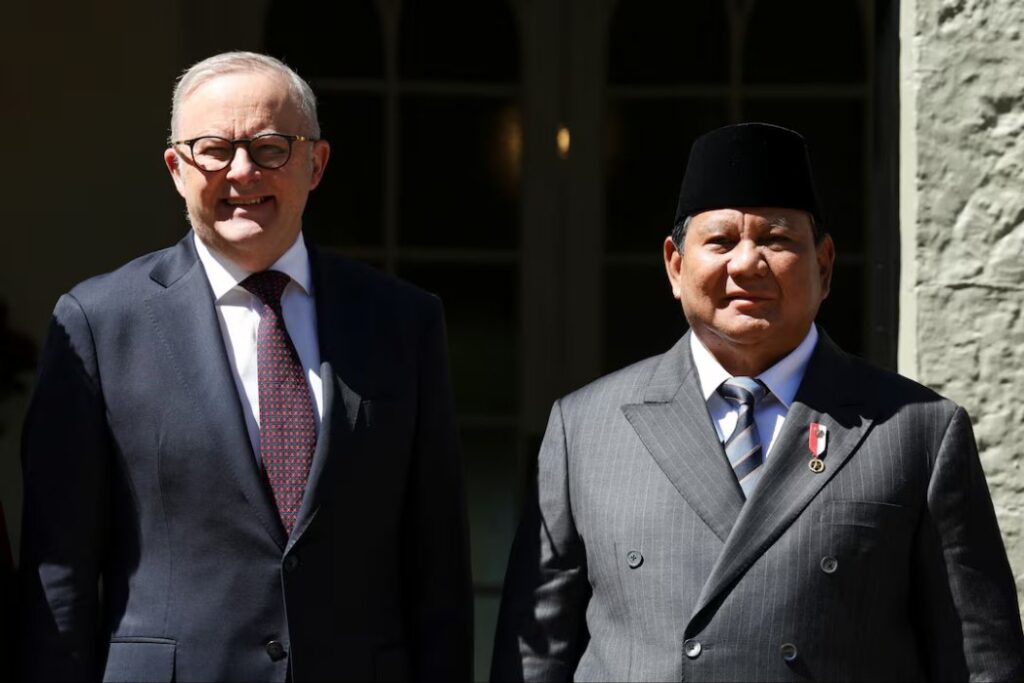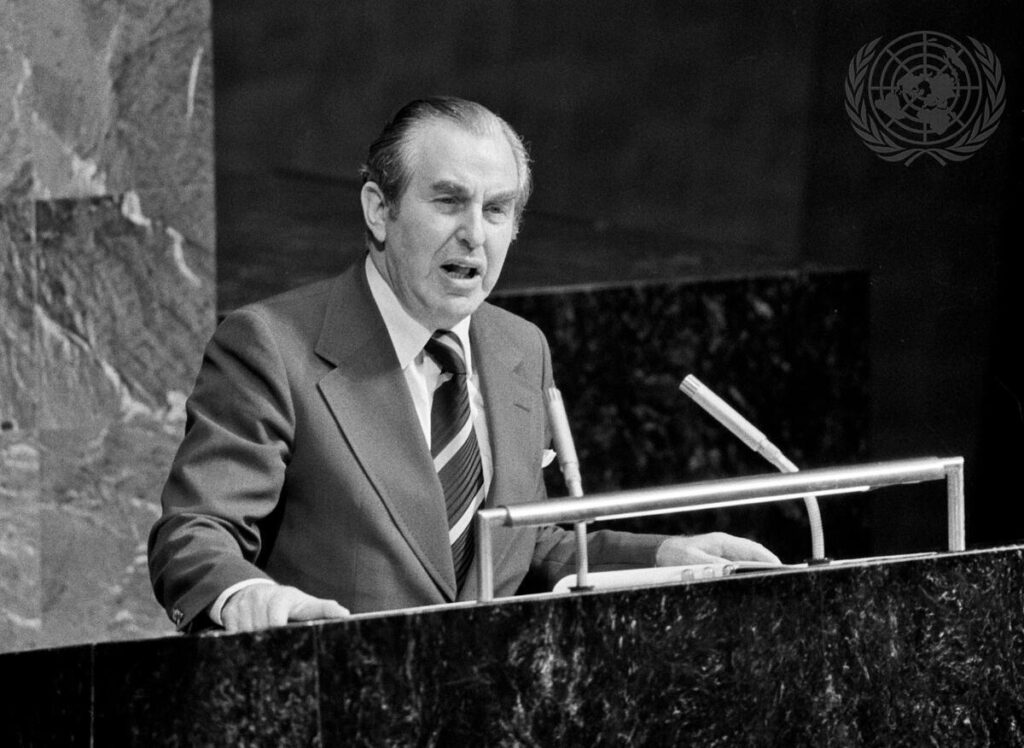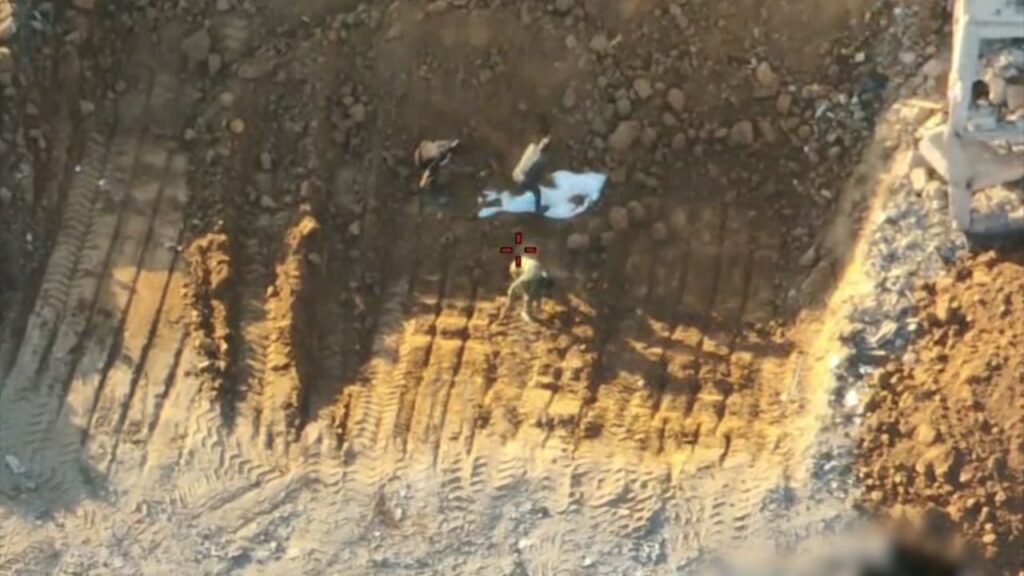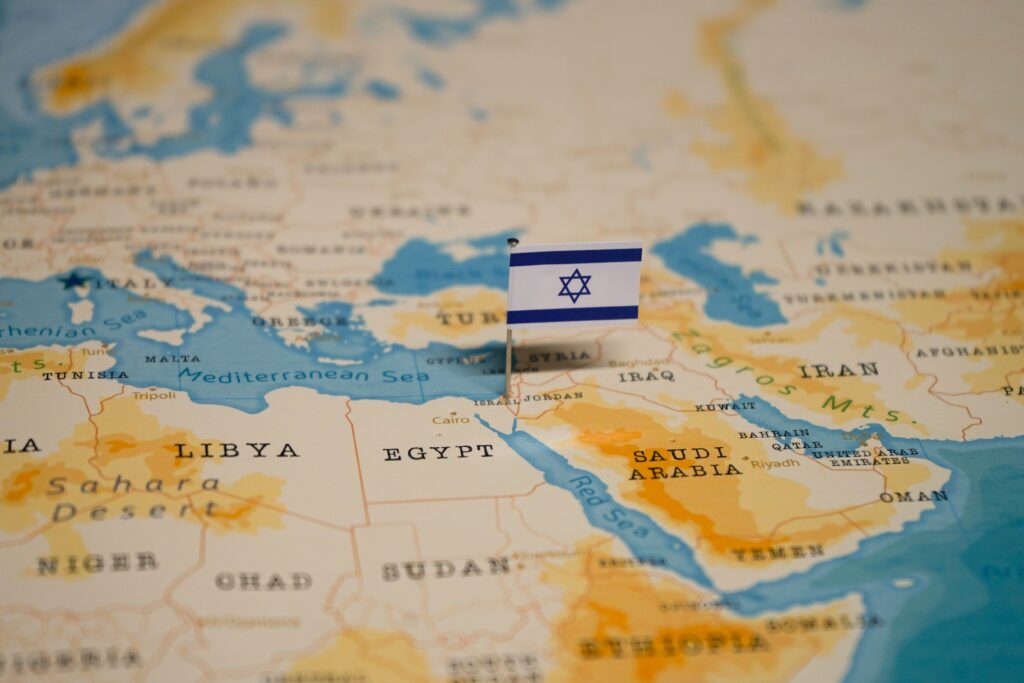IN THE MEDIA
Can hardliner narratives around Gaza be rewritten?
September 17, 2025 | Ran Porat
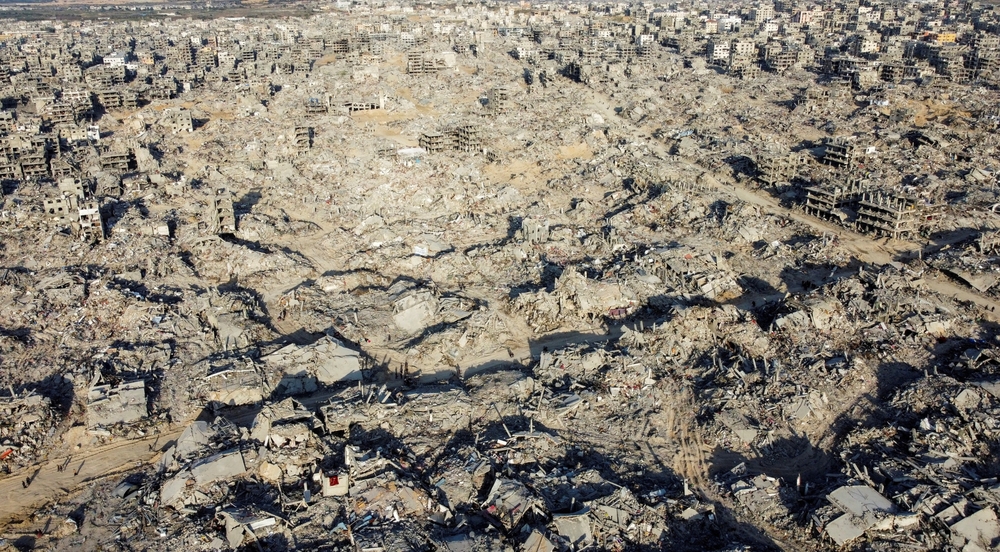
Eureka Street – 12 September 2025
According to the Cambridge Introduction to Narrative, a narrative is “the representation of an event or a series of events”. A hardliner, as defined by the Maria Cristina Garcia in her study of Cubans exiles in the 1990s, is someone who “consider[s] rapprochement or any political/economic accommodation” of the other side in a conflict (in Garcia’s case, the Castro government) “to be totally unacceptable”. Hence, a hardliner narrative in the context of a conflict between sides could be, for example, defined as a story constructed by one party to reject any possibility of compromise or negotiations with the other party.
Both Israelis and Palestinians construct narratives about Gaza in these terms. Through symbolic and charged meanings, Gaza is woven into the history of the conflict as a central and tragic actor.
A brief history of the Gaza Strip
The Gaza Strip is, in some respects, a historical anomaly. It was created after Egypt’s invasion of the territory of the former British Mandate of Palestine in May 1948, immediately after the Zionist declaration of the State of Israel. Advancing rapidly from the Sinai along the Mediterranean coast, the Egyptian army was halted near Ashdod. This point became the northern boundary of the territory under Cairo’s control until 1967.
Following the war, around 200,000 Palestinians entered the Gaza strip —some fleeing battles, others expelled from nearby villages by the IDF. Today, Gaza’s population exceeds 2 million, crowded into 365 square kilometres—stretching 41 kilometres from the Egyptian border north to Zikim Beach in Israel, and only 5.7 to 12 kilometres wide. Its cities (Gaza, Khan Yunis, Rafah) and refugee camps form one of the world’s most densely populated areas.
Egyptian rule fostered a distinct culture in Gaza, separate from the Jordanian-controlled West Bank, until Israel occupied both in the 1967 Six-Day War. After Israel’s 2005 Disengagement—when it evacuated 8,000 settlers and removed all soldiers—Hamas seized control of Gaza in a violent and bloody 2007 coup, ousting the Fatah-led Palestinian Authority. Since then, social and economic gaps have widened between the poorer, more religious Gazans and their West Bank counterparts.
Palestinian Gaza: Sacrifice on the road to al-Aqsa
In 1956, as Israel bombed Gaza, famed Palestinian author Ghassan Kanafani wrote his Letter from Gaza, a love-hate reflection. Initially describing his contempt for the city’s “failed pictures painted in grey,” his perspective shifted after his niece lost her leg in Israeli shelling. Gaza became, for him, “a beginning” and a symbol of the road toward reclaiming Palestine—an emotional, sacrificial step toward al-Aqsa Mosque in Jerusalem.
For Palestinians, Gaza embodies resistance (muqawama), martyrdom (Istishad), and steadfastness (Sumud). Shlomo Hasson observed that “The Gaza Strip is a symbol of the Palestinian plight, associated with narratives of disaster, dispossession, restrictions, humiliations—narratives that underline the victim identity.”
Mahmoud Abbas echoed this in 2005, while standing at Gaza Port, stating that: “From here, our people begin the march towards establishing an independent Palestinian state with Jerusalem as its capital.”
Kaufman (2009) explained that after the collapse of peace talks in the late 20th century, “hard-liners on both sides could pursue chauvinist mobilization,” using emotive symbols—such as al-Aqsa—to justify conflict. For Hamas, this hardline narrative is central, as shown in its October 7, 2023 attack, when scores of terrorists followed by regular Gazan men, swarmed into the Israeli towns and cities around the strip to murder, rape, pillage and kidnap men, women and children.
Hamas named this attack which began the war “Tufan al-Aqsa” (Al-Aqsa Flood/Storm), explicitly framing Gaza as the launchpad for the “liberation” of Palestine and removal of the ‘Zionist entity’. Even as the Strip lay in ruins in 2024 (and still is), Hamas leader Khaled Mashaal insisted that this destruction was part of the “march of our people toward liberation.”
Israel’s Gaza: The ‘Heavy Gates’ of the ‘Hornets’ Nest’
In the same year Kanafani wrote about Gaza, Israelis also defined their view through powerful words. On April 29, 1956, Palestinian fedayeen from Gaza killed Roi Ruthberg near Nahal Oz—the same kibbutz attacked by Hamas in 2023. At Ruthberg’s funeral, IDF Chief of Staff Moshe Dayan delivered a eulogy that shaped Israeli perceptions of Gaza for decades.
Dayan acknowledged Palestinian grievances: “For eight years they have been sitting in the refugee camps in Gaza, and before their eyes we have been transforming the lands and villages where they and their fathers dwelt into our estate.” Yet he concluded that Israelis must remain vigilant: “This small band of youths, settled in Nahal Oz, carries on its shoulders the heavy gates of Gaza… we must be, morning and evening, armed and ready.”
Historian Avi Shlaim later noted that Dayan recognized Arab suffering but “his very empathy bred deep pessimism concerning the possibility of an accommodation with them.”
Over time, Israeli depictions of Gaza shifted toward the metaphor of a “hornets’ nest”, swarming with militants and hostility. Former Defense minister Avigdor Lieberman, in December 2023, explicitly labelled Gaza “a hornet’s nest… swarming with terrorists, even the seemingly uninvolved citizens up to their necks in terror.”
The Palestinians adopted that Israeli image of Gaza, issuing warning that attempts to ‘mess’ with it would result in painful ‘stinging’ of Israel. Gazan Umaya Juha communicated this in her 2014 caricature during the Protective Edge war between Israel and Hamas, depicting Israeli Prime Minister Binyamin Netanyahu as poking a stick into the Gaza hornets’ nest.
The genocide and famine narratives
In the recent conflict, Palestinians have framed Gaza through two additional hardliner narratives: genocide and famine.
The first narrative centres on genocide. Very early after the war began, Hamas and Palestinian representatives argued that Israel was conducting a campaign of ethnocide — deliberately seeking to kill as many Palestinians as possible within the Gaza Strip. This claim gained international legal prominence in 2024 when South Africa, a close ally of Hamas, repeated the accusation before the International Court of Justice.
The genocide narrative remains fiercely contested. Some analyses support it, citing, for example, the number of Palestinian casualties — which, according to Hamas, has reached as high as 65,000. Others debunk this claim, arguing that it relies on flawed methodologies for defining genocide and misrepresents the ratio of civilians to militants killed. Nonetheless, the narrative has become central to pro-Palestinian advocacy. As one study notes, “Palestinian advocates have worked to counter Israeli narratives by eyewitness accounts and data on casualties and destruction while promoting their interpretation of events, particularly regarding the genocide allegations.”
Ironically, accusations of genocide against Israel often overlook Hamas’s own 1988 charter, which rejects all compromise with Zionism, declares all of Palestine an Islamic endowment (Waqf), contains large amounts of explicit antisemitism including some clauses which seem to call for all Jews to be killed, and calls for “Jihad for the Liberation of Palestine is an Individual Duty.” Critics also fail to acknowledge that Israel is a democracy — and no democracy has ever been found responsible for genocide. Moreover, the October 7 assault was explicitly part of a declared plan to erase the Jewish state from existence.
A more recent extension of the genocide narrative is the famine claim, alleging that Israel is (or was) deliberately inducing hunger in Gaza by withholding humanitarian aid. Israel did halt nearly all aid deliveries for several weeks between early March and mid-April 2025, explaining the move as an effort to prevent Hamas from routinely looting aid convoys and profiting from reselling donated food and supplies. During this period, Israel established an alternative (which some see as controversial) aid distribution mechanism known as the GHF.
Images of starving children – many (but not all) later shown to be staged or unrelated to the famine claims – and reports from UN agencies (which Israel argues have a history of misrepresentation due to anti-Israel bias) lent credibility to the famine narrative. This, in turn, translated into international pressure on Israel, which has since resumed aid deliveries in large volumes.
Both the genocide narrative and its famine sub-story reflect hardline positions that divide “truth” into binary categories of victims and criminal victimisers.
Breaking the hardliner narratives
As of this writing, war still engulfs Gaza. Civilians remain trapped between Hamas’s refusal to release hostages and Israel’s determination to eliminate its enemy. Entire neighbourhoods lie in rubble, and residents face a recurring cycle of displacement and despair.
The only path forward is to move beyond hardliner narratives and construct a new, hopeful story. Rebuilding Gaza requires international support — Israel, the US, and Arab states must help foster a future based on human rights, prosperity, and peace.
Instead of martyrdom, Gaza’s narrative must embrace freedom, life, and dignity. Instead of hornets’ stings, Gazans could envision themselves as bees—building a hive of productivity and creating honey for themselves and their Israeli neighbours.
For Gaza and Israel alike, daring to imagine such a future is the first step toward making it real.
Ran Porat teaches Israel and Middle Eastern Affairs at Monash University and is a research associate at the Australian Centre for Jewish Civilisation. He is also a research associate at the Australia/Israel & Jewish Affairs Council (AIJAC) and a research fellow at the International Institute for Counter-Terrorism at Reichman University in Herzliya.
Tags: Gaza, Hamas, Israel, Palestinians, Terrorism

